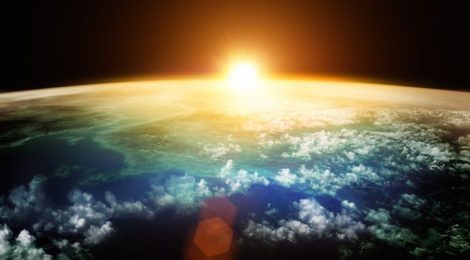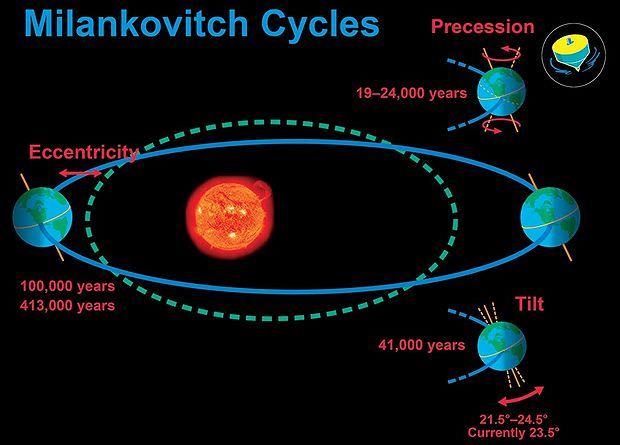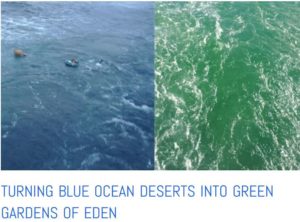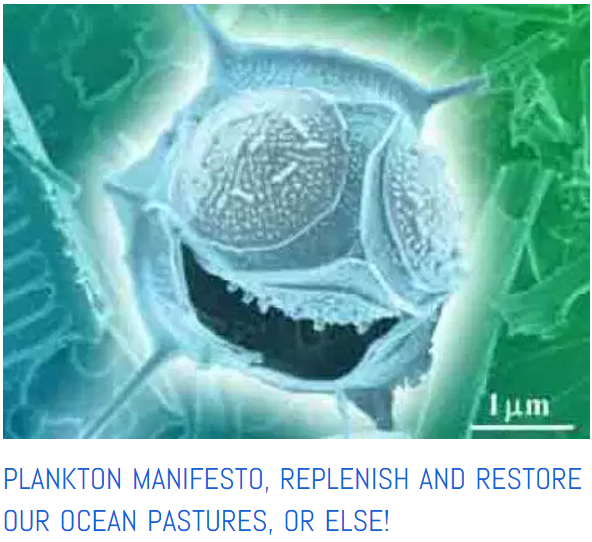
Ocean Plankton Power and Their 40,000 Year Life-Cycle Outshines The Sun
Climate Change Advocates And Deniers Argue Over How Climate Is Controlled By The Sun
Deniers maintain that long solar cycles cause climate change/ global warming making human influence inconsequential
Advocates maintain that the changing climate is purely ‘the usual suspects’ human technological influence that exacerbates global warming
<< TILT >>! They are both missing the most important factor
In a recent paper in Nature Geoscience the authors propose this Blue Planet’s climate is in fact mainly responsive to kilo-year life cycles of ocean plankton that inhabit the surface ocean. The plankton are, in fact, the most abundant form of life on their planet. It is the plankton power in vast ocean pastures that leverages the power of the sun and dynamically changes, indeed, controls, the amount of CO2 in the atmosphere. That CO2, as a greenhouse gas, global warming is thus actively and tightly managed by the plankton. When the plankton blooms are healthy and normal so too is our Blue Planet.
The ocean plankton performs their blue planet life-support both over short periods of time as in the annual seasons we are all familiar with, and they do this over very long periods of time. Their 40,000-year life-cycles that are beyond ordinary comprehension, how might life-forms that individually run their life in time frames measured in hours collectively be engaged in actions over the course of tens of thousands of years. The surprising finding of these 40,000-year cycles comes from the study of ocean geochemistry record that is captured in ocean sedimentary profiles.
It seems that while we may worship the sun, it barely holds a candle to the power, persistence, and perspicacity of plankton.
The established 40,000-year plankton cycles this blue planet, are in part related to the Milankovitch Cycles. Those show the planet changing its relative position and tilt with regard to the sun. While important, they do not have sufficient heating or cooling power to explain associated climate change. Climate history is not so easily defined as being due to the intensity of solar radiation reaching the surface of the earth and that portion of the energy being reflected back into the cold of space.

Long term changes in the orbit of this blue planet around the sun are well known. But the mathematics of solar heating simply fails to deliver climate change. Plankton power is shown to be in overwhelming control of Earth’s climate.
Chemical and isotopic signatures of sediments that were deposited during the Cretaceous and other periods of earth’s history document regular changes in temperature and carbon cycling within this time scale. The 40 kyr cycles observed in the geological climate archives have been hypothesized to be simple correlations to the obliquity (tilt)-triggered insolation changes affecting the surface temperature, the circulation of ocean and atmosphere, the hydrological cycle, the biosphere, and ultimately the carbon cycle.
One of the problems with this standard model has been that changes in global insolation are so very small that scientists have known they had to be amplified by some mysterious positive feedback mechanisms to have the potency to affect global climate.
<< TILT>> Doing the maths
Now a group of scientists from Kiel, Germany propose a very different perspective that emerges from a new mathematical model of the living marine biosphere, the ocean plankton pastures. The model simulates the bloom and bust cycle of plankton pastures in the ocean as the most powerful force that controls climate.
The model works by resolving the associated microbial oxidation and reduction reactions controlling the standing stocks of dissolved oxygen, sulfide, major nutrients and traces of vital micro-nutrients like iron that are used by the plankton in the ocean. In their model’s mathematical experiments, the scientists found surprising emergence of a self-sustained 40 kyr climate cycle. The match works without applying direct warming of the sun that is related to the planet tilting/obliquity forcing.
“In our model, the carbon cycle is largely controlled by plankton living in the surface ocean”, explains Prof. Dr. Klaus Wallmann from GEOMAR, lead author of the study which was recently published in Nature Geoscience.
Blooming plankton proves to be the driving force. The ocean plankton pastures repurpose atmospheric CO2 via photosynthesis into more plankton. That plankton biomass cycle is ecologically tied to microorganisms that degrade the plankton biomass and release CO2 back into the atmosphere.
Since CO2 is a potent greenhouse gas, the biological control of CO2 levels in the ocean controls the CO2 in the atmosphere and that is what controls surface temperatures and global climate. The cyclic growth of ocean plankton pastures are in turn controlled by nutrients that are recycled by the living ocean. Most importantly tiny trace amounts of iron that is found in the ocean in concentrations of parts per trillion, a million times below the concentration of the fertilizer nutrients like nitrates and phosphates.
“We have integrated this new biogeochemical model in a circulation model of the Cretaceous Ocean, and it creates a self-sustained 40 kyr climate cycle without applying obliquity forcing”, says Dr. Sascha Flögel, co-author from GEOMAR.
“From our perspective, the cycle is induced by a web of positive and negative feedbacks that are rooted in the oxygen-dependent turnover of nitrogen, phosphorus, iron and sulfur in the ocean.”
“Chemical and isotopic data recorded in sediments deposited in the Cretaceous Ocean show periodic changes that are consistent with the model results”, Flögel continues
This dramatic new biological view on climate change, the relationship between causes and effects is radically different from the standard climate physics orbital theory. The marine biosphere rather than insolation is setting the pace and amplitude by controlling the partial pressure of CO2 in the atmosphere.
“Our new theory is supported by observations and consistent with our understanding of biogeochemical cycles in the ocean”, according to Prof. Wallmann.
The scientists are careful in not wanting to utterly displace the role of the dominant world of climate physics, but what they have found in ‘doing the math’ is that the reductionist/simplistic view that the temperature of this living planet is exclusively explained by lifeless physics is just plain wrong. The grant that the cyclic tilt of the planet and other orbital parameters may also affect global climate change but these minor effects depend upon powerful amplified plankton feedback mechanisms.
The periodic climate change documented in the geological record must reflect both the (living) breath of the biosphere as it responds to the subtle orbital and insolation forcing.
Helping Mother Nature Save This Blue Planet

Looking astern off the transom of my research ship BEFORE we began replenishing dust to restore the ocean to health. AFTER dusting a beautiful emerald-green sea – click to read more
Today’s rapid global warming and climate change is a crisis the world is desperate to find a tool to use to save life on this Blue Planet as we like it. While engineers, business, and political interests wrangle over whose ideas will command the lions share of multi-trillion dollar climate change budgets we are going to hell in a handbasket. The greatest danger to this world is waiting for someone else to save it.
The ocean plankton pastures are the force of Nature that is best at taking care of their blue planet. Our industrial age and its CO2 has momentarily, that ‘moment’ being the past century of the fossil fool age, has crippled the ocean pastures and their plankton power with a cataclysmic drought of dust. We can simply replenish what we are denying the ocean pastures, their vital dust. By helping Mother Nature we will help ourselves. Everywhere on this blog, you may read about my work to prove this works via globally significant eco-restoration projects.
Join me.









